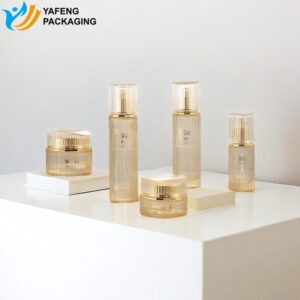
Nachrichten & Blog
Großartige Leistungen in der Wirtschaft werden nie von einer einzelnen Person erbracht. Sie werden von einem Team von Menschen vollbracht. Wir haben diese dynamische Gruppe von Menschen
In einer Zeit, in der der Wettbewerb in der Kosmetikindustrie immer härter wird, sind das Aussehen und die Leistung von Kosmetikverpackungen aus Glas zu Schlüsselfaktoren geworden, um die Verbraucher anzuziehen. Die Oberflächenbeschichtung ist wie ein Zauber, der Glasverpackungen einen einzigartigen Charme verleiht. Damit lassen sich nicht nur kosmetische Glasflaschen herstellen, Parfümflaschen aus GlasGlascremetiegel, Lotionflaschen, Lotionflaschen und andere Verpackungsmaterialien farbenfroh und optisch ansprechend zu gestalten, sondern auch ihre Korrosionsbeständigkeit und Verschleißfestigkeit zu verbessern. In diesem Artikel werden die Prinzipien, die Systemzusammensetzung, der grundlegende Prozessablauf und die Anwendung des Oberflächenbeschichtungsprozesses von kosmetischen Glasverpackungen im Bereich der kosmetischen Verpackungsmaterialien eingehend analysiert. Durch detaillierte Daten und Vergleiche wird das Geheimnis dieses Prozesses für Sie gelüftet.
Beim Sprühen, einem unverzichtbaren Färbeverfahren nach der Formung der kosmetischen Glasverpackungen, wird die Beschichtung unter Einwirkung von Druck oder Zentrifugalkraft durch eine Sprühpistole oder einen Scheibenzerstäuber in gleichmäßige und feine Tröpfchen zerteilt und präzise auf die Oberfläche der Glasverpackung aufgetragen. Es ist wie ein prächtiger, auf Glasverpackungen zugeschnittener Anstrich, der gewöhnliches Glas sofort zum Strahlen bringt.
Die Sprühtechnik kann in viele Formen unterteilt werden, die gebräuchlichsten sind Luftsprühen, Airless-Sprühen, elektrostatisches Sprühen und abgeleitete Methoden wie Hochdruck-Niederdruck-Zerstäubungssprühen, thermisches Sprühen, automatisches Sprühen und Mehrgruppensprühen. Verschiedene Sprühverfahren eignen sich für kosmetische Glasverpackungsmaterialien unterschiedlicher Art und Anforderungen. So eignet sich beispielsweise das Luftspritzen für Parfümflaschen und Lotionflaschen aus Glas mit hohen Anforderungen an die Oberflächenqualität und komplexen Formen und kann einen feinen und gleichmäßigen Beschichtungseffekt erzielen, während das elektrostatische Sprühen die Ausnutzung der Beschichtung und die Produktionseffizienz verbessert und häufig in der Großproduktion von kosmetischen Glasflaschen und Lotionflaschen eingesetzt wird.
Schutzfunktion: Kosmetische Glasverpackungen werden durch verschiedene Faktoren wie Licht, feuchte Luft und kosmetische Inhaltsstoffe während des täglichen Gebrauchs erodiert. Das Sprühverfahren kann diese erosiven Medien wirksam isolieren und das Glas vor Schäden schützen, indem es eine Beschichtung auf der Glasoberfläche aufbringt. Einschlägigen Forschungsergebnissen zufolge kann die Korrosionsbeständigkeit von Verpackungsmaterialien aus kosmetischem Glas, die durch Sprühen behandelt werden, um 30% - 50% und die Verschleißfestigkeit um 20% - 40% verbessert werden, was die Lebensdauer der Verpackungsmaterialien erheblich verlängert. Bei Cremetiegeln aus Glas kann die Schutzschicht nach dem Sprühen beispielsweise verhindern, dass die Ölbestandteile in der Creme das Glas angreifen, und die Integrität des Verpackungsmaterials aufrechterhalten.
Dekorative Funktion: Im Zeitalter der Ökonomie des Aussehens ist das Erscheinungsbild von Kosmetika von entscheidender Bedeutung. Das Sprühverfahren kann kosmetischen Glasverpackungen eine große Vielfalt an Farben, Glanz und Textur verleihen, um dem Streben der Verbraucher nach Schönheit gerecht zu werden. Egal, ob es sich um einen kristallklaren Parfümflakon oder einen bunten Lotionflakon handelt, das Sprühverfahren kann einen einzigartigen visuellen Effekt erzielen und die Attraktivität des Produkts steigern. Eine Umfrage zeigt, dass Kosmetika mit exquisitem Aussehen einen 20% - 30% höheren Absatz auf dem Markt haben als solche mit gewöhnlichem Aussehen.
Besondere Funktionen: Neben den grundlegenden Schutz- und Dekorationsfunktionen kann das Sprühverfahren kosmetischen Glasverpackungen auch besondere Funktionen verleihen. So können beispielsweise spezielle Beschichtungen mit feuerfesten, wasserdichten und bewuchshemmenden Funktionen, die auf die Glasoberfläche aufgetragen werden, die Kosmetika sicherer und bequemer in der Anwendung machen; temperaturanzeigende Beschichtungen, die auf die Glasoberfläche aufgetragen werden, können die Lagertemperatur von Kosmetika durch Farbveränderungen anzeigen, um die Produktqualität zu gewährleisten; und leuchtende und reflektierende Beschichtungen können Kosmetika nachts oder in bestimmten Umgebungen auffälliger machen und die Produkterkennung verbessern.
Klimatisierung: sorgt für saubere und frische Luft, die mit Temperatur, Feuchtigkeit und Staubentfernung für den Spritzraum behandelt wurde. Angemessene Temperatur und Luftfeuchtigkeit können die Trocknungsgeschwindigkeit und Beschichtungsqualität der Beschichtung gewährleisten, während saubere Luft verhindern kann, dass Staub und andere Verunreinigungen an der Oberfläche des Glasverpackungsmaterials haften und den Sprüheffekt beeinträchtigen. Im Allgemeinen wird die Temperatur des Sprühraums auf 20℃ - 25℃ geregelt, und die relative Luftfeuchtigkeit wird vorzugsweise bei 40% - 60% gehalten.
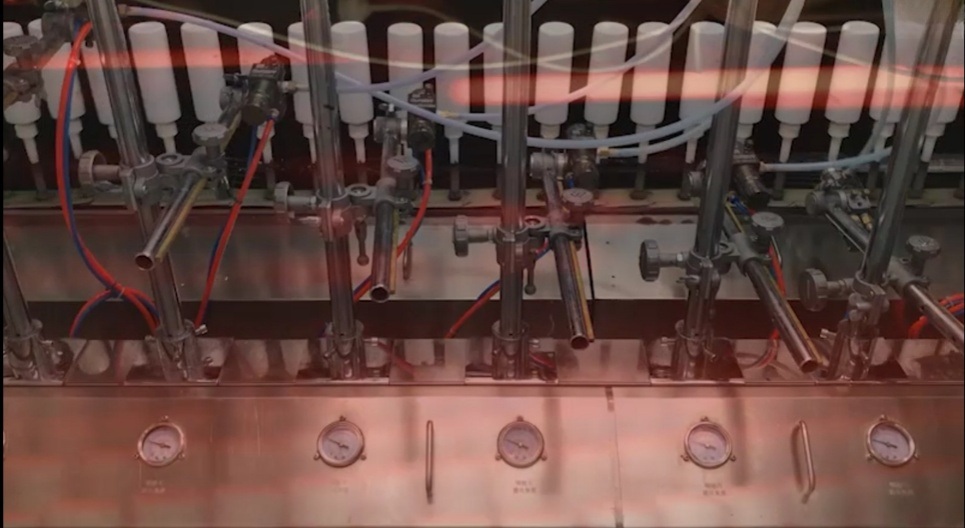
Raumkörper besprühen: Es besteht aus einer dynamischen Druckkammer, einer statischen Druckkammer, einem Sprühraum und einer Gitterbodenplatte. Das Design der dynamischen Druckkammer und der statischen Druckkammer kann die Luft gleichmäßig verteilen und bietet eine stabile Luftströmungsumgebung für den Spritzvorgang; der Spritzarbeitsraum ist der Raum, in dem der Spritzvorgang tatsächlich durchgeführt wird; die Gitterbodenplatte wird verwendet, um den Farbnebel und die Beschichtung aufzufangen, die während des Spritzvorgangs fallen.
Abgas- und Farbnebelabscheidesystem: Durch das Farbnebelabscheidegerät, den Abluftventilator, den Luftkanal und andere Ausrüstungen wird der während des Spritzvorgangs erzeugte Farbnebel rechtzeitig aus dem Spritzraum abgeleitet, und der Farbnebel wird wirksam aufgefangen, um Umweltverschmutzung zu vermeiden. Zu den gängigen Farbnebelabscheidern gehören der Wasservorhang und der Wasserwirbeltyp, und ihre Farbnebelabscheideleistung kann mehr als 90% erreichen.
Vorrichtung zur Entfernung von Farbabfällen: Sie ist für die rechtzeitige Entfernung der Farbreste im Abwasser aus der Abluftwaschanlage des Spritzraums verantwortlich und leitet das gefilterte Wasser zur Wiederverwendung in den Graben am Boden des Spritzraums zurück, was nicht nur Wasserressourcen spart, sondern auch den Ausstoß von Farbresten reduziert.
Die Beschichtungsanlage besteht hauptsächlich aus sieben Teilen: Vorbehandlungsanlage, Pulversprühanlage, Farbsprühanlage, Ofen, Wärmequelle, elektronisches Steuersystem und Hängeförderkette.
Vorbehandlungsgeräte: Bei Verpackungsmaterialien aus kosmetischem Glas besteht der Zweck der Vorbehandlung darin, Verunreinigungen wie Öl und Staub von der Oberfläche zu entfernen und die Oberfläche aufzurauen, um die Haftung der Beschichtung zu verbessern. Die Vorbehandlungsanlage mit mehreren Sprühstationen ist eine häufig verwendete Anlage, deren typischer Prozess das Vorentfetten, Entfetten, Waschen mit Wasser, Waschen mit Wasser, Konditionieren der Oberfläche, Phosphatieren, Waschen mit Wasser, Waschen mit Wasser, Waschen mit reinem Wasser und andere Schritte umfasst. Für einige spezielle Verpackungsmaterialien aus Glas, wie z. B. Parfümflaschen aus Glas mit komplexen Mustern, können auch Strahlanlagen zur Behandlung eingesetzt werden. Diese Methode verursacht keine Wasserverschmutzung und eignet sich für Glasteile mit einfacher Struktur, starkem Rost, ohne Öl oder mit wenig Öl.
Pulversprühsystem: Das kleine Zyklon + Filterelement Rückgewinnungsgerät in der Pulversprühanlage ist ein fortschrittlicheres Pulverrückgewinnungsgerät mit schneller Farbwechselgeschwindigkeit, das die verschiedenen Farbanforderungen von kosmetischen Glasverpackungsmaterialien erfüllen kann. Es wird empfohlen, importierte Produkte für die Schlüsselteile des Pulversprühsystems zu verwenden, um die Qualität und Stabilität des Sprühens zu gewährleisten, während der Pulversprühraum, der elektrische mechanische Aufzug und andere Teile inländische Produkte verwenden können, um die Kosten zu senken.
Malerei-Ausrüstung: Ölspritzkabinen und Wasservorhangspritzkabinen werden häufig für die Oberflächenbeschichtung von kosmetischen Glasverpackungen verwendet. Sie können Farbnebel effektiv auffangen und die Sauberkeit der Spritzumgebung gewährleisten. Sie eignen sich für die Beschichtung von großen Objekten wie Fahrrädern und Automobilblattfedern und sind auch für die Massenproduktion von Verpackungsmaterial für Kosmetika aus Glas.
Backofen: Der Ofen ist ein wichtiges Gerät in der Beschichtungsanlage, und seine Temperaturgleichmäßigkeit wirkt sich direkt auf die Beschichtungsqualität aus. Zu den Heizmethoden des Ofens gehören Strahlung, Heißluftumwälzung und Strahlung + Heißluftumwälzung. Der Ofen mit Heißluftumwälzung hat eine gute Wärmedämmung, eine gleichmäßige Temperatur im Ofen und einen geringeren Wärmeverlust. Nach Tests liegt der Temperaturunterschied im Ofen bei weniger als ±3oC und erreicht damit die Leistungsindikatoren ähnlicher Produkte in fortgeschrittenen Ländern, wodurch sichergestellt werden kann, dass die kosmetischen Glasverpackungsmaterialien während des Trocknungsprozesses gleichmäßig erwärmt werden, um Probleme wie Risse und Ablösung der Beschichtung zu vermeiden.
Wärmequellen-System: Die Heißluftumwälzung ist eine weit verbreitete Heizmethode. Sie nutzt das Prinzip der Konvektionsleitung zur Beheizung des Ofens, um die Trocknung und Aushärtung des Werkstücks zu erreichen. Die Wärmequelle kann je nach den spezifischen Gegebenheiten des Benutzers aus Strom, Dampf, Gas oder Heizöl gewählt werden. Wenn der Umwälzlüfter, der die Wärmequelle erzeugt, ein spezieller, hochtemperaturbeständiger Lüfter ist, hat er die Vorteile einer langen Lebensdauer, eines geringen Energieverbrauchs, eines niedrigen Geräuschpegels und einer geringen Größe, wodurch die Produktionskosten gesenkt und die Produktionseffizienz verbessert werden können.
Elektrisches Kontrollsystem: Es gibt zwei Arten der elektrischen Steuerung der Beschichtungsanlage: zentralisierte und einspaltige Steuerung. Die zentralisierte Steuerung verwendet eine programmierbare Steuerung (SPS), um den Host zu steuern, steuert automatisch jeden Prozess entsprechend dem zusammengestellten Steuerprogramm, realisiert die Datenerfassung und den Überwachungsalarm und eignet sich für die groß angelegte und hoch automatisierte Produktion; die einspaltige Steuerung ist eine einspaltige Steuerung jedes Prozesses, und der elektrische Schaltkasten (Schrank) ist in der Nähe der Ausrüstung aufgestellt. Sie ist kostengünstig, intuitiv zu bedienen und einfach zu warten. Sie wird häufig in kleinen Produktionsbetrieben eingesetzt.
Hängeförderkette: Der Hängeförderer ist ein Fördersystem für industrielle Montagelinien und Beschichtungsanlagen. Der Stau-Hängeförderer ist für die Beschichtungslinie von kosmetischen Glasverpackungen geeignet. Das Werkstück wird an einem speziellen Hänger aufgehängt, und die Ein- und Auslaufweichen sind glatt. Die Weichen werden durch elektrische Steuerung entsprechend den Arbeitsanweisungen geöffnet und geschlossen, wodurch der automatische Transport der Werkstücke in jeder Bearbeitungsstation gewährleistet werden kann. Die Werkstücke werden parallel im Starkkühlraum und im Unterteilbereich gekühlt, und im Starkkühlbereich ist eine Vorrichtung zur Hängererkennung und zur Abschaltung des Zugalarms installiert, um die Sicherheit und Stabilität des Produktionsprozesses zu gewährleisten.
Als Werkzeug zum Zerstäuben und Aufsprühen von Farbe auf die Oberfläche von Glasverpackungsmaterialien wirken sich Leistung und Qualität der Spritzpistole direkt auf den Sprüheffekt aus. Verschiedene Arten von Spritzpistolen sind für unterschiedliche Spritzverfahren und Beschichtungen geeignet. So eignen sich z. B. Luftspritzpistolen für das Feinspritzen von Beschichtungen mit niedriger Viskosität, mit denen gleichmäßige und feine Beschichtungen erzielt werden können, während Airless-Hochdruckspritzpistolen für das schnelle Spritzen von Beschichtungen mit hoher Viskosität geeignet sind, die eine hohe Effizienz aufweisen und sich für großflächige Beschichtungen eignen.
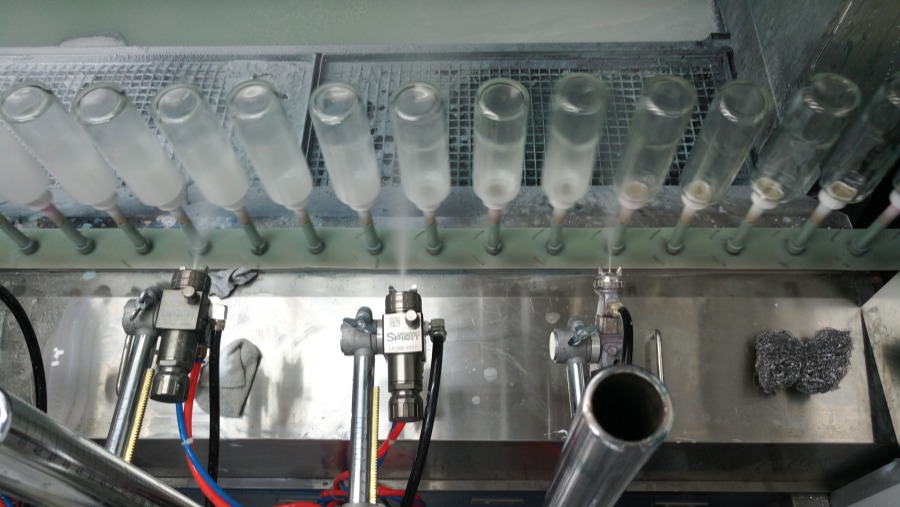
Beschichtungen sind wichtige Materialien zum Schutz und zur Dekoration der Oberfläche von kosmetischen Glasverpackungen. Nachdem sie auf die Glasoberfläche aufgetragen wurden, bilden sie einen durchgehenden Beschichtungsfilm mit bestimmten Funktionen und fester Adhäsion. Zu den Funktionen von Beschichtungen gehören hauptsächlich Schutz, Dekoration und spezielle Funktionen. Im Bereich der kosmetischen Glasverpackungen sind verschiedene Arten von Beschichtungen für unterschiedliche Anforderungen geeignet. Für Cremetiegel und Lotionflaschen aus Glas, die hochglänzend und verschleißfest sein müssen, können beispielsweise Polyurethanbeschichtungen verwendet werden; für Parfüm- und Lotionflaschen aus Glas, die chemikalienbeständig und witterungsbeständig sein müssen, sind Acrylbeschichtungen eine gute Wahl.
Es gibt Unterschiede im Beschichtungsprozess und im Verfahren der verschiedenen Ziele. Nimmt man das übliche Verfahren zur Beschichtung von Kunststoffteilen als Beispiel, so hat dieses Verfahren auch eine gewisse Aussagekraft für die Beschichtung von kosmetischen Glasverpackungen.
Vorentfettung: Die Oberfläche des Glasverpackungsmaterials teilweise vorentfetten, um den größten Teil des Öls und der Verunreinigungen auf der Oberfläche zu entfernen und den anschließenden Entfettungsprozess vorzubereiten.
Hauptentfettung: Verwenden Sie ein Reinigungsmittel, um die Oberfläche des Glasverpackungsmaterials gründlich zu entfetten, um sicherzustellen, dass die Oberfläche sauber und frei von Öl ist.
Waschen mit Wasser: Nach zwei Wasserwaschvorgängen verwenden Sie sauberes Leitungswasser, um die auf der Glasoberfläche verbliebenen chemischen Reagenzien abzuspülen. Die Wassertemperatur für die Wasserwäsche ist Raumtemperatur (RT), und der Sprühdruck beträgt 0,06 - 0,12 MPa. Anschließend wird mit reinem Wasser gewaschen und die Glasoberfläche gründlich mit frischem deionisiertem Wasser gereinigt. Die Reinheitsanforderung an deionisiertes Wasser ist eine Leitfähigkeit von ≤10μm/cm, um sicherzustellen, dass keine Verunreinigungen auf der Glasoberfläche zurückbleiben.
Luftausblasbereich: Der Luftkanal wird nach dem Waschen mit reinem Wasser im Wasserwaschkanal verwendet, um die auf der Glasoberfläche verbliebenen Wassertropfen mit starkem Wind abzublasen. Aufgrund der strukturellen Eigenschaften von Glasverpackungsmaterialien kann es jedoch vorkommen, dass die Wassertröpfchen an einigen Stellen nicht vollständig weggeblasen werden, und der Trocknungsbereich kann die Wassertröpfchen nicht trocknen. Daher muss die Oberfläche des Werkstücks nach der Beflammung überprüft werden. Wenn sich Wasser ansammelt, muss die Glasoberfläche abgewischt werden.
Trocknen: Die Trocknungszeit des Produkts beträgt im Allgemeinen 20 Minuten. Der Ofen verwendet gasbeheizte Umluft, um die Temperatur im Trockenkanal auf den eingestellten Wert zu bringen. Wenn das gewaschene und getrocknete Produkt den Ofenkanal durchläuft, trocknet die heiße Luft die Feuchtigkeit auf der Oberfläche des Produkts. Bei der Einstellung der Backtemperatur müssen die Verdunstungsrate des Wassers auf der Produktoberfläche und die Hitzebeständigkeit des Glasverpackungsmaterials umfassend berücksichtigt werden, um eine Verformung oder Beschädigung des Glases aufgrund einer zu hohen Temperatur zu vermeiden.
Flammenbehandlung: Verwenden Sie eine starke oxidierende Flamme, um die Glasoberfläche zu oxidieren und die Oberflächenspannung der Glassubstratoberfläche zu erhöhen, damit sich die Farbe besser mit der Substratoberfläche verbinden kann, was die Haftung der Farbe verbessert. Dieser Schritt ist entscheidend für die Verbesserung der Haftung der Farbe auf der Glasoberfläche.
Grundierung: Der Zweck der Grundierung ist vielfältig und besteht hauptsächlich darin, die Haftung der Farbe auf der Glasoberfläche zu erhöhen, Farbunterschiede zu verringern und die schlechten Stellen des Werkstücks zu verdecken. Obwohl das Aussehen der Grundierung nicht leicht zu erkennen ist, hat sie einen wichtigen Einfluss auf die Qualität und Leistung der gesamten Beschichtung.
Mittellack: Mid-Coat ist eine Beschichtungsfolie, die nach der Beschichtung Farbe zeigt. Sie macht nicht nur das Aussehen des Glasverpackungsmaterials schöner, sondern verleiht dem Beschichtungsfilm auch gute physikalische und chemische Eigenschaften, wie z. B. Härte und Verschleißfestigkeit.
Obere Beschichtung: Die Deckschicht ist die letzte Schicht im Beschichtungsprozess. Ihr Zweck ist es, dem Beschichtungsfilm hohen Glanz und ausgezeichnete physikalische und chemische Eigenschaften zu verleihen, das Glasverpackungsmaterial vor äußeren Einflüssen zu schützen und die allgemeine Textur und Qualität des Produkts zu verbessern.
Die Sprühtechnik ist im Bereich der Kosmetikverpackungen weit verbreitet. Sie ist eines der wichtigsten Farbbehandlungsverfahren für äußere Komponenten von Produkten wie Lippenstiftsets, Kosmetikflaschen aus Glas, Pumpenköpfe und Flaschenverschlüsse. Ob es sich nun um einen zarten und kleinen Parfümflakon aus Glas handelt, das Sprühverfahren kann elegante Farben und einzigartigen Glanz präsentieren und die hochwertige Textur des Parfüms hervorheben; oder um einen Cremetiegel aus Glas mit großem Fassungsvermögen und eine Lotionflasche, das Sprühverfahren kann die Verschleißfestigkeit und Korrosionsbeständigkeit verbessern und gleichzeitig reiche Farben und Muster verleihen, die die Aufmerksamkeit der Verbraucher auf sich ziehen; oder um eine Lotionflasche mit verschiedenen Formen, das Sprühverfahren macht ihr Aussehen farbenfroher und hebt sie von anderen Kosmetika ab.
Marktforschungsdaten zufolge entfallen auf dem Markt für kosmetische Glasverpackungen mehr als 70% auf Produkte, bei denen die Sprühtechnologie zum Einsatz kommt, und dieser Anteil nimmt von Jahr zu Jahr weiter zu. Die zunehmende Aufmerksamkeit der Verbraucher für das Aussehen von Kosmetika hat die Kosmetikunternehmen dazu veranlasst, dem Oberflächenbeschichtungsverfahren von Glasverpackungsmaterialien mehr Aufmerksamkeit zu schenken, um die Wettbewerbsfähigkeit ihrer Produkte zu verbessern.
Die Oberflächenbeschichtung von kosmetischen Glasverpackungen ist ein komplexer Prozess, der Technik und Kunst miteinander verbindet. Es verleiht Glasverpackungsmaterialien ein einzigartiges Aussehen und eine hervorragende Leistung durch die Sprühtechnologie. Vom Prinzip und der Systemzusammensetzung des Sprühverfahrens bis hin zum grundlegenden Prozessablauf ist jedes Glied eng miteinander verbunden und bestimmt gemeinsam den endgültigen Beschichtungseffekt. In der heutigen, hart umkämpften Kosmetikindustrie ist die Beherrschung einer fortschrittlichen Oberflächenbeschichtungstechnologie von großer Bedeutung für die Verbesserung der Qualität und der Wettbewerbsfähigkeit von kosmetischen Glasverpackungsmaterialien. Mit dem kontinuierlichen Fortschritt in Wissenschaft und Technik und der zunehmenden Diversifizierung der Verbrauchernachfrage wird sich das Oberflächenbeschichtungsverfahren für kosmetische Glasverpackungsmaterialien auch in Zukunft weiter erneuern und entwickeln und der Kosmetikindustrie weitere interessante Produkte bescheren.
Ich hoffe, dass dieser Artikel Ihnen helfen kann, den Prozess der Oberflächenbeschichtung von Verpackungsmaterialien aus Kosmetikglas besser zu verstehen. Wenn Sie weitere Fragen zu diesem Verfahren haben oder mehr darüber wissen möchten, können Sie sich gerne mit uns in Verbindung setzen.
Der obige Blog analysiert den Prozess der Oberflächenbeschichtung von kosmetischen Glasverpackungen unter verschiedenen Gesichtspunkten. Wenn Sie neue Ideen für die Tiefe des Inhalts, die Auswahl der Fälle usw. haben, können Sie mir diese gerne mitteilen.
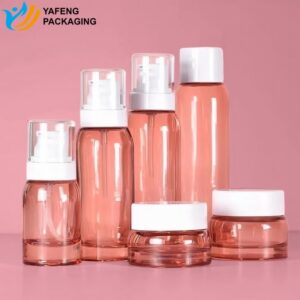
Lernen Sie 11 Oberflächenbehandlungen für Kosmetikverpackungen kennen, die Ästhetik, Haltbarkeit und Branding verbessern. Lernen Sie die Vor- und Nachteile sowie die Anwendungsmöglichkeiten kennen, um die beste Option zu wählen.
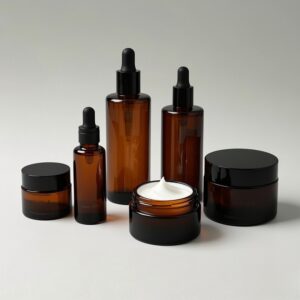
Braunglasflaschen bieten Luxus, UV-Schutz und Stabilität für Kosmetikverpackungen. Erfahren Sie mehr über ihre Herstellung, Qualitätskontrolle und Vorteile für Hautpflegemarken.
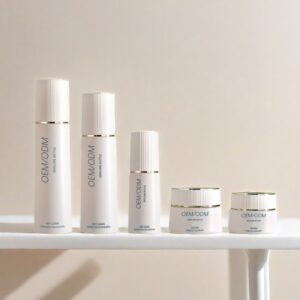
Erforschen Sie den sich entwickelnden Markt für Kosmetikverpackungen! Erfahren Sie mehr über steigende Materialkosten, Designtrends, umweltfreundliche Lösungen und Strategien, mit denen Kosmetikmarken erfolgreich sein können.
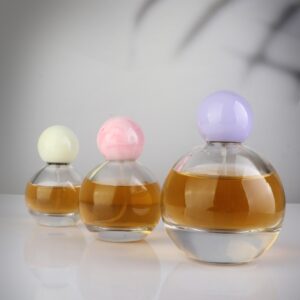
Entschlüsseln Sie die Geheimnisse des Großhandels mit Parfüm und Flakons! Finden Sie Ihren perfekten Duft, entdecken Sie individuelle Flaschendesigns und beziehen Sie von Top-Lieferanten in diesem ultimativen Leitfaden.
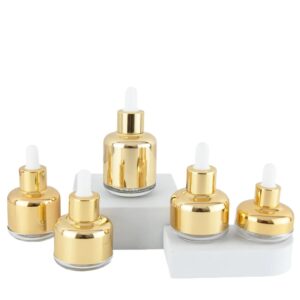
Werten Sie Ihre Kosmetikmarke mit strategischem Verpackungsdesign auf! Entdecken Sie luxuriöse und nachhaltige Verpackungstrends für Kosmetik, Markenkooperationen und Unboxing-Erlebnisse.
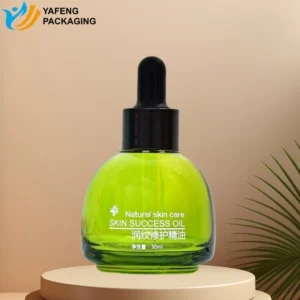
Entdecken Sie, wie die Sprühbeschichtung Hautpflege- und Parfümverpackungen aufwertet, indem sie das Erscheinungsbild, die Markenidentität, die Haltbarkeit und die Sicherheit mit fortschrittlicher Technologie verbessert.
Informieren Sie sich über individuelle und Standardflaschen für Hautpflegeverpackungen. Erfahren Sie in diesem ausführlichen Leitfaden, wie die Lösungen von Yafeng die Markenidentität, Qualität und Effizienz steigern.

Entdecken Sie, wie Farbverlaufsspray kosmetische Glasflaschen verwandelt, das Markenimage verbessert und die Produktattraktivität steigert - mit Expertenwissen von Yafeng Packaging.
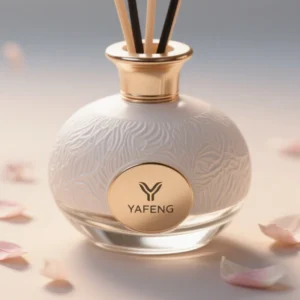
Entdecken Sie, wie die Rattan-Aromatherapie funktioniert und warum Glasflaschen die beste Wahl für einen lang anhaltenden Duft, Sicherheit und eine nachhaltige, elegante Verpackung sind.
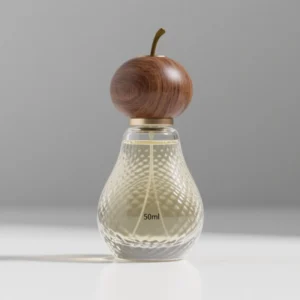
Entdecken Sie die 10 besten Hölzer für Parfümkappen und vergleichen Sie Beschaffenheit, Vor- und Nachteile sowie den Preis, damit Sie das beste Material für eine stilvolle, hochwertige Verpackung wählen können.
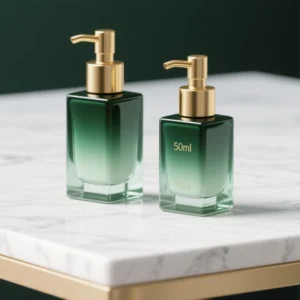
Informieren Sie sich über kosmetische Glasflaschen - Sicherheit, ökologische Vorteile, Typen, Färbung, Formkosten, MOQ und Produktionstipps - in einem sachkundigen, datenreichen Leitfaden.
WhatsApp uns